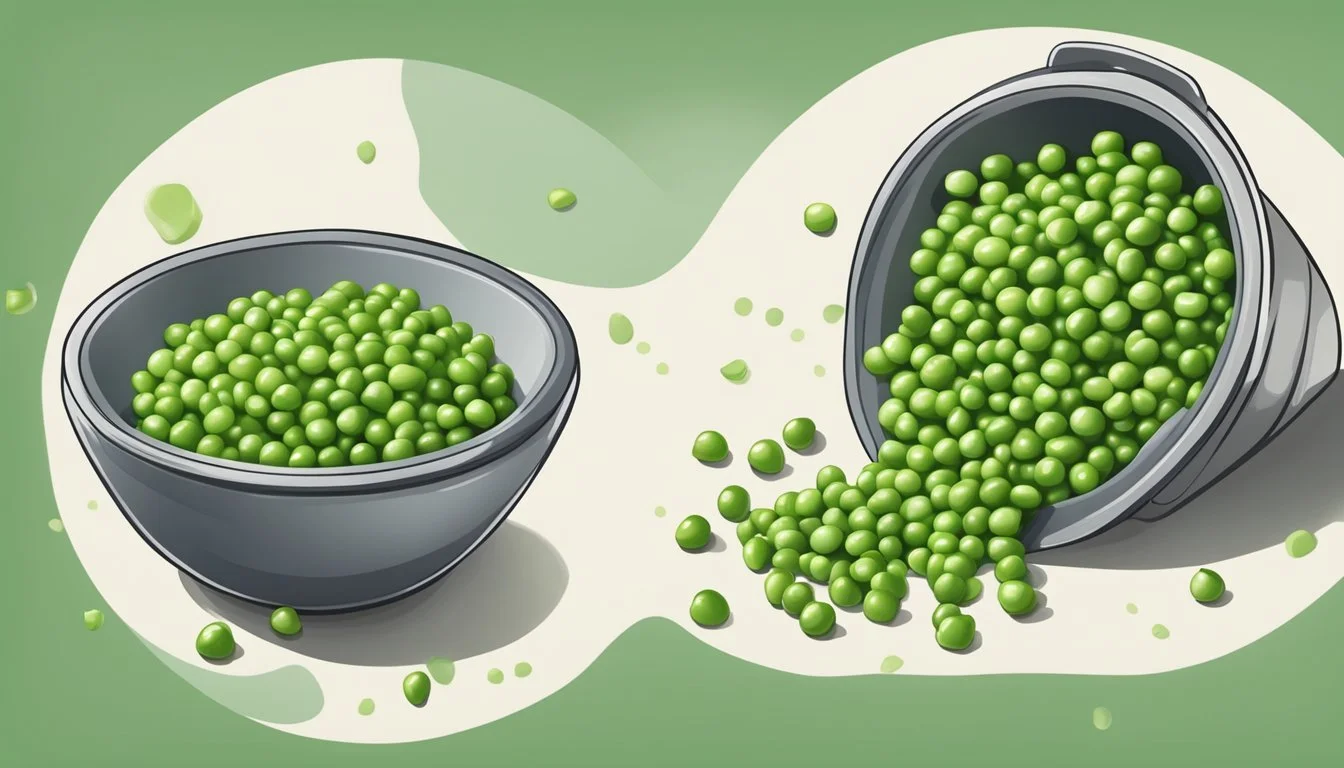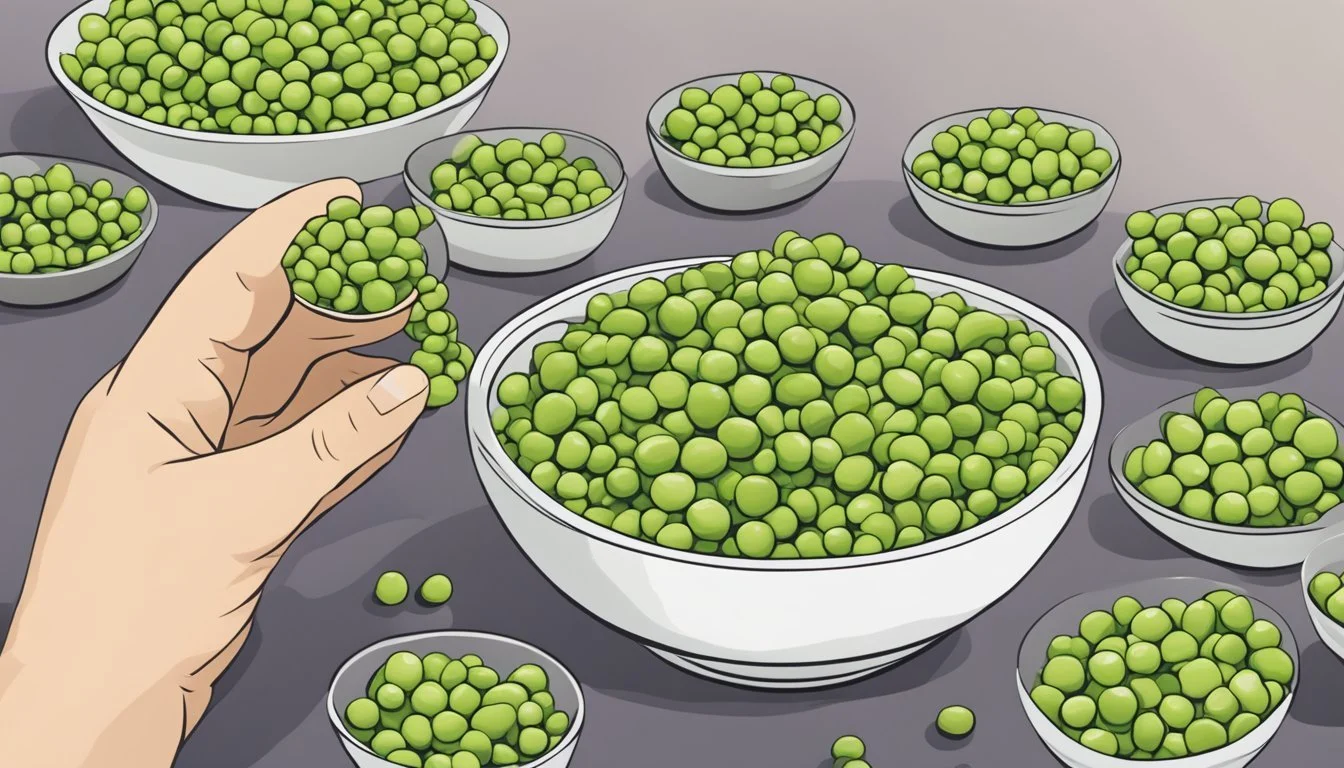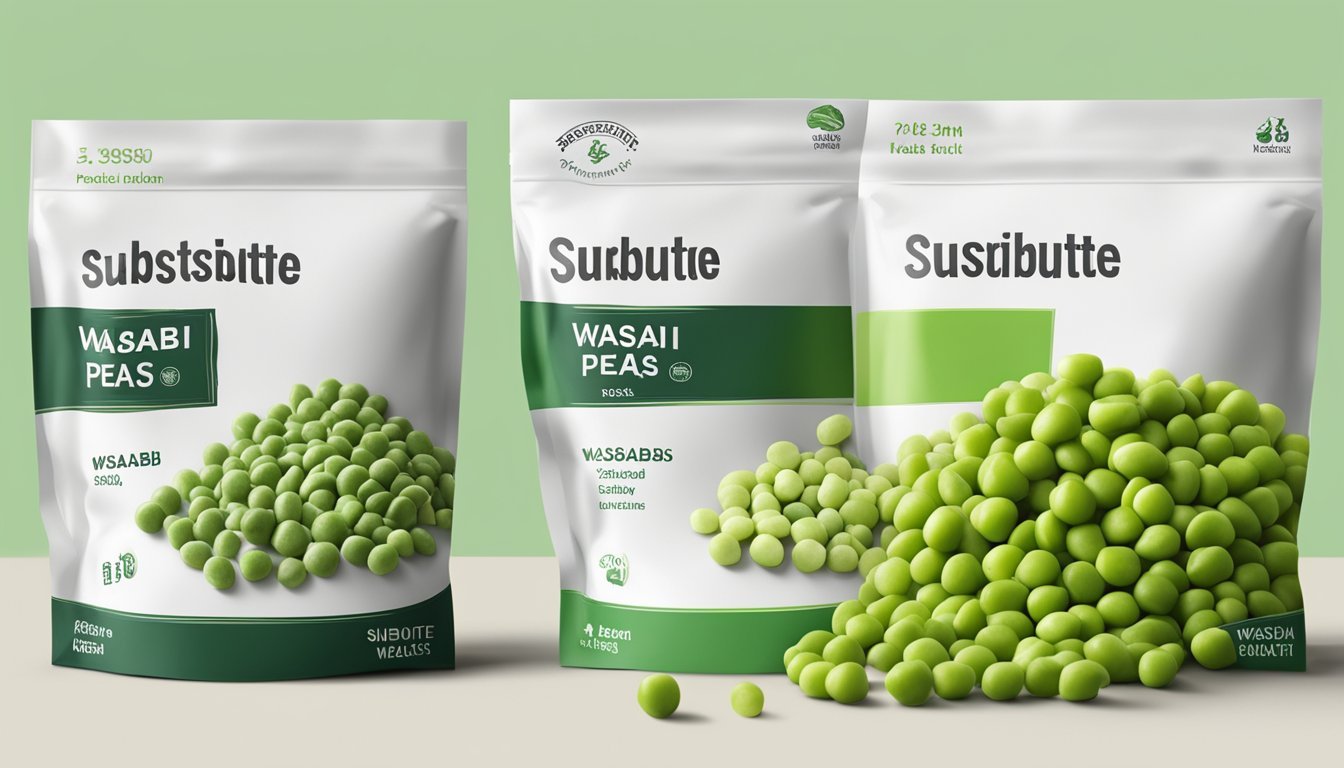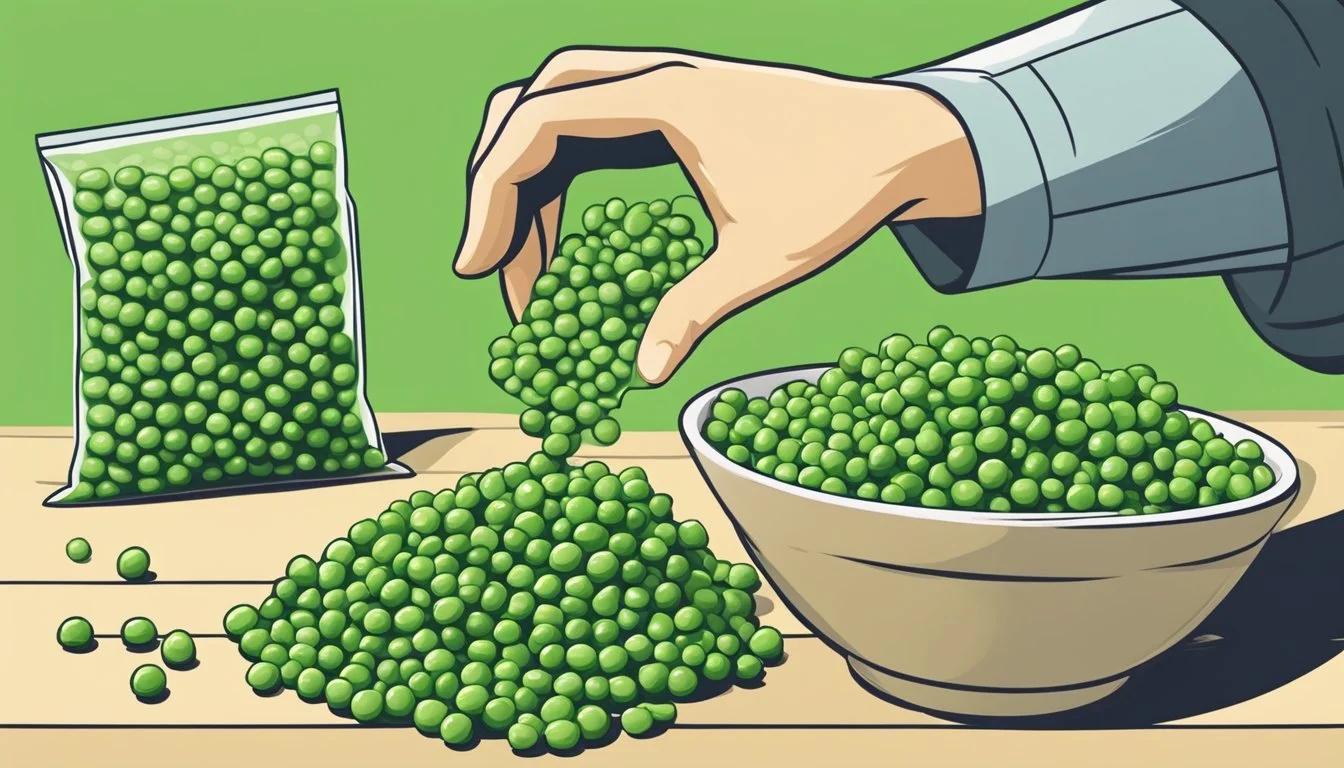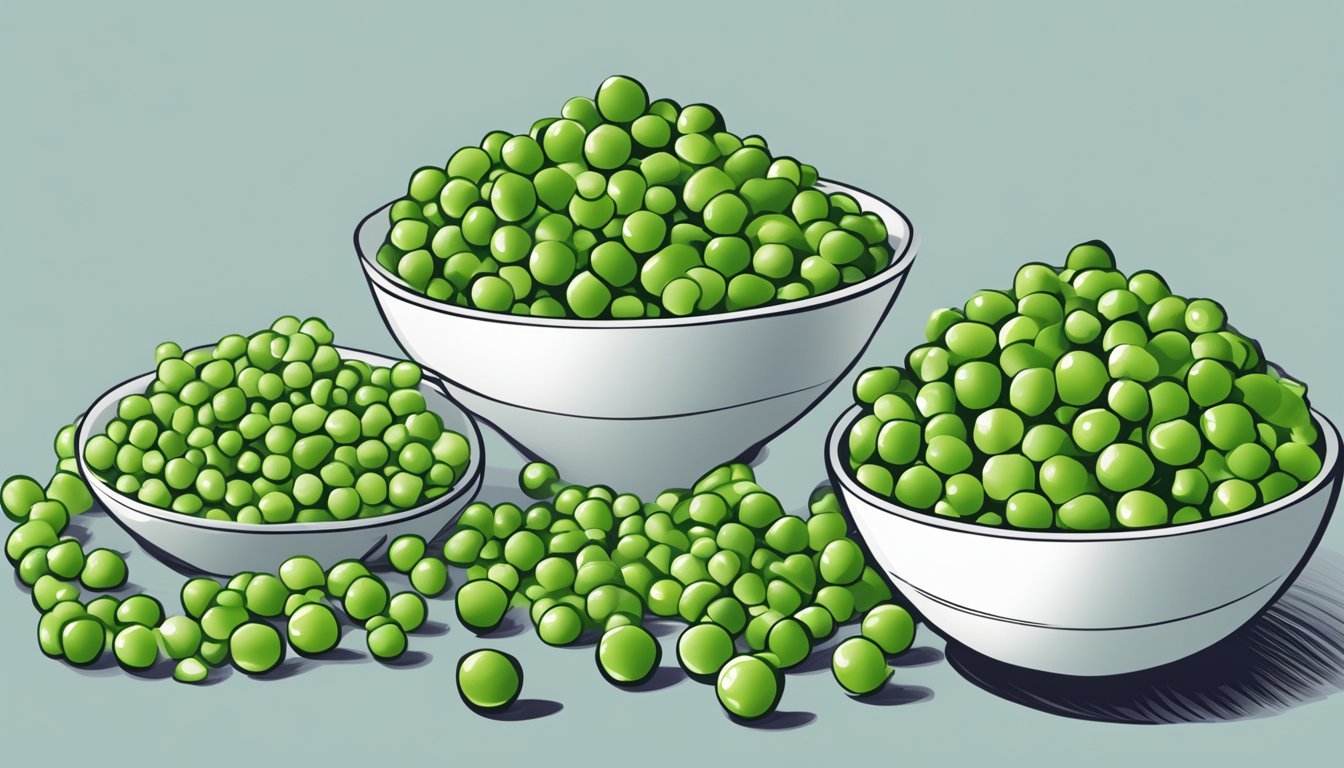How to Substitute Wasabi Peas for Peas
A Simple Swap Guide
Wasabi peas offer a unique combination of heat, crunch, and flavor that can invigorate a variety of dishes. These small, fiery bites are traditionally made by coating dried peas with a mixture of wasabi powder, salt, starch, and sometimes sugar, before being roasted to crispy perfection. This potent snack has gained popularity beyond its Japanese origins, finding its way into kitchens worldwide. For those looking to introduce a similar spicy kick and crunchy texture to their recipes, the quest to find a suitable substitute for wasabi peas begins with understanding the essential qualities that they bring to a dish.
When considering alternatives, it's important to balance the intense flavor profile of wasabi with the desired texture. Peas, in their natural form, provide a sweet and mild taste with a tender bite, which contrasts the pungent and sharp characteristics of wasabi peas. To emulate the experience in recipes calling for this specialized ingredient, one must seek out ingredients that offer a comparable heat and crunch. The success of the substitution depends not only on matching these sensory attributes but also on achieving harmony with the overall recipe.
Understanding Peas and Wasabi Peas
In exploring the world of peas and wasabi peas, one should note the differences in nutritional content and the unique sensory experiences each provides.
Nutritional Comparison
Peas, typically the green variety, offer a wealth of nutrients including protein, fiber, iron, and vitamins while being relatively low in calories. A serving of green peas provides essential nutrients and can be a healthful part of a balanced diet due to their health benefits.
Nutrient Green Peas (per 100g) Wasabi Peas (per 100g) Calories 81 360 Protein 5.4g 11.6g Fiber 5.5g 3.0g Iron 1.5mg 2.1mg Sodium 5mg 388mg Vitamin C 40mg Not significant
Wasabi peas are a snack created by coating dried green peas with a mixture that includes wasabi. The wasabi coating often contains additional ingredients that increase the sodium content. While they have a higher protein content due to the wasabi coating, wasabi peas are also higher in calories.
Flavor and Texture Profile
The flavor profile of green peas is mild, sweet, and slightly earthy, pairing well with a variety of dishes. Their texture is tender when cooked, yet they can retain a pleasant bite if not overcooked.
On the other hand, wasabi peas pack a punch with their bold and spicy flavor profile that comes from the wasabi. The wasabi provides a distinctive heat that can stimulate the sinuses, similar to horseradish. Their texture is crunchy and can be quite different from fresh green peas due to the drying process.
Green peas can be substituted with other legumes or vegetables that provide a similar sweetness and tender texture, but finding a substitute for wasabi peas that matches their unique heat and crunch may require creativity with seasonings and preparation methods.
Culinary Uses and Considerations
In culinary practices, the integration of wasabi peas as a substitute for regular peas can invite a vibrant kick to traditional recipes and inspire new adaptations in various dishes. The substitution demands a thoughtful approach to balancing flavors and textures to preserve the essence of the original cuisine.
Traditional Recipes Featuring Peas
Wasabi peas offer an audacious twist to classic recipes that typically feature peas. For example, in British cuisine, marrowfat peas are a staple in dishes like pea soup and mushy peas. The original recipes focus on the subtle sweetness and soft texture of the peas.
Pea Soup: Replace marrowfat peas with wasabi peas for an unexpectedly spicy version. Before adding, crush the wasabi peas lightly to help them integrate into the soup without overwhelming it.
Mushy Peas: Start with a smaller quantity of wasabi peas than typically used. The wasabi coating should be rinsed off if a milder heat is desired.
Integrating Wasabi Peas into Dishes
Wasabi peas can be ingeniously incorporated into an array of dishes, from salads and snacks to rice dishes and dips, adding a lively crunch and a potent punch of wasabi heat.
Salads: Sprinkle crushed wasabi peas over salads for a spicy crunch. They pair well with robust greens like kale or spinach.
Snack Mixes: Mix wasabi peas into trail mix or snack mixes to introduce a distinctive spicy element that contrasts with the sweetness of dried fruits or the saltiness of nuts.
Dips: Blend finely ground wasabi peas into dips to add texture and a burst of spice.
Rice Dishes: Stir whole or crushed wasabi peas into rice dishes just before serving to maintain their crunch and potent flavor.
Substitution Techniques
When substituting wasabi peas for regular peas, cooks should be mindful of the distinct flavor and texture difference. Adjustments in cooking times and methods, as well as balancing of flavors, will ensure that the unique qualities of wasabi peas are optimally incorporated without overpowering the dish.
Adjusting Cooking Times and Methods
Wasabi peas are often drier and crunchier than fresh or frozen peas, necessitating alterations to cooking techniques to achieve an appropriate texture.
Soaking: Before cooking, wasabi peas can benefit from a brief soak in warm water to soften them.
Cooking Time: Generally, wasabi peas require less cooking time than regular peas.
Heat Management: Careful heat control is crucial; too high heat can lead to a loss of the inherent sharp wasabi flavor.
Balancing Flavors When Substituting
The substitution of wasabi peas brings a pungent heat that needs to be counterbalanced with other flavors to create a harmonious taste profile.
Salt and Vinegar: A dash of salt or a splash of vinegar can help moderate the spiciness of wasabi.
Complementary Flavors: Ingredients like soy sauce or garlic powder can complement the heat of wasabi while adding depth.
Horseradish: For those seeking to mimic the heat without overshadowing other flavors, a small amount of horseradish can be used as an undercurrent.
Considerations for Dietary Restrictions
When substituting wasabi peas for regular peas, one must consider the implications for individuals with specific dietary restrictions, such as allergies and nutritional requirements. This is crucial to avoid adverse health reactions and to ensure nutritional needs are met.
Allergies and Sensitivities
Wasabi peas might not be suitable for everyone, especially those with food allergies or sensitivities. Allergens commonly associated with wasabi peas include:
Legumes: Peas themselves are legumes, which are a common allergen.
Wheat: Some wasabi peas contain wheat, to which some individuals are sensitive or allergic.
Table: Potential Allergens in Wasabi Peas
Allergen Potential Risk to Individuals Peas (legumes) Could trigger legume allergies Wheat Risk for those with celiac disease or wheat allergy Wasabi & Seasoning May contain additional allergens or irritants
Sensitivities such as those to FODMAPs can also be an issue. While green peas are low in FODMAPs in small servings, any excess may worsen digestive issues for those with sensitivities.
Health Benefits and Nutrition
Wasabi peas bring various nutrients to the table, but they also come with a higher sodium content compared to regular peas. The nutritional considerations include:
Table: Nutritional Content Comparison
Nutrient Wasabi Peas (per ounce) Regular Peas Calories 122 Varies Protein Small amount Higher Fiber Small amount Higher Sodium 198.5 mg Lower Iron Present Present Folate Not highlighted Present Thiamin Present Present Magnesium Not highlighted Present Copper Present Present Vitamins Vitamin K present Varied vitamins
Regular peas offer a rich source of fiber and protein and contain essential vitamins such as folate, which is important for DNA synthesis and repair. They also have higher amounts of iron and magnesium. Wasabi peas do provide a modest amount of protein and fiber but should be consumed in moderation due to the higher calorie and sodium levels which can affect individuals with high blood pressure or those monitoring their calorie intake.
Finding and Choosing Quality Substitutes
When seeking alternatives to wasabi peas, one should focus on finding substitutes that closely mimic the original's texture and flavor profile. The right replacement will offer a similar crunch and nutritional value while catering to dietary preferences or restrictions.
Alternative Legumes and Pulses
For a substitute that maintains the nutritional benefits of peas, particularly fiber, legumes and pulses are an excellent option. Here are some suitable alternatives:
Lima beans: They present a similar texture and can be easily integrated into dishes typically featuring green peas.
Black-eyed peas: Offering a savory taste, these can replace peas to bring an earthy flavor to the table.
Fava beans: With a slightly sweet, nutty profile, they make a good stand-in for green peas.
Butter beans: Known for their buttery texture, these can also serve as a substitute.
Edamame: This soybean offers a comparable bite to wasabi peas and is rich in protein.
Lentil beans: Though they require a longer cooking time, lentils are a hearty alternative.
Purple hull peas and crowder peas: Less common, but they provide a similar size and a hearty flavor.
Navy beans, green beans, and pinto beans: More neutral in taste but can fill in for green peas when needed.
Note: When using frozen versions of these substitutes, one might need to adjust cooking times as per their individual characteristics.
Homemade Preparation of Wasabi Peas
For those wanting to replicate the piquant zest of wasabi peas at home, the process is straightforward:
Obtain dry green peas—pre-soaking them is essential.
Once soaked and dried again, roast the peas with a small amount of oil until they are crunchy.
Coat the roasted peas evenly with wasabi powder for that classic spicy kick.
Alternatively, one can mix in other flavors such as nuts or seeds for a varied taste. This homemade method allows for complete control over the amount of wasabi flavor and the overall spiciness of the peas.
Worldwide Availability and Preferences
Wasabi peas, being a unique fusion of traditional flavor and contemporary snacking, have different levels of availability and appeal across the globe, influenced by cultural preferences and culinary practices.
Wasabi Peas in Japanese Cuisine
In Japan, wasabi peas are a traditional snack, known for their sharp and pungent flavor derived from wasabi, a plant native to the country. Wasabi itself plays a significant role in Japanese gastronomy, often associated with sushi and sashimi. The peas, when coated with the wasabi mixture, adopt a vibrant green hue, typically intensified by green food coloring to mimic the natural color of wasabi. Japanese cuisine values the authenticity of flavor and age-old preparation techniques, which is echoed in the production of wasabi peas as a snack.
Global Tastes and Trends
In the global arena, the popularity of wasabi peas as an alternative snack is on the rise. They cater to an international palette that craves bold flavors and non-traditional snack options. Culture and flavor preferences vary, but the demand for spicy and flavorful snacks like wasabi peas is becoming more predominant, particularly in regions where global cuisine is highly appreciated. In the United States and other Western markets, wasabi peas are readily available in most grocery stores, offering an affordable and convenient option for consumers seeking a taste of Japanese-inspired snack culture. Worldwide, the trend showcases a blend of traditional elements with modern snacking habits, bridging cultural gaps through flavor.

